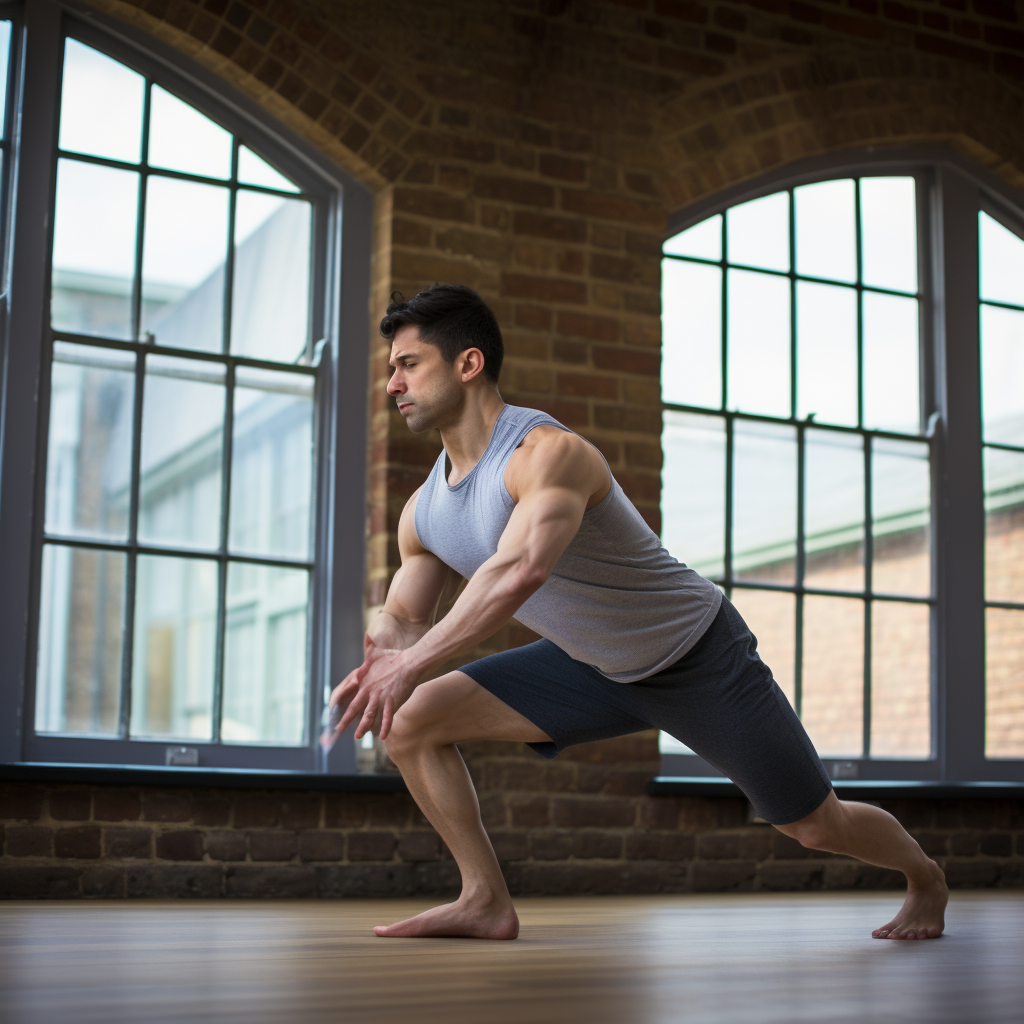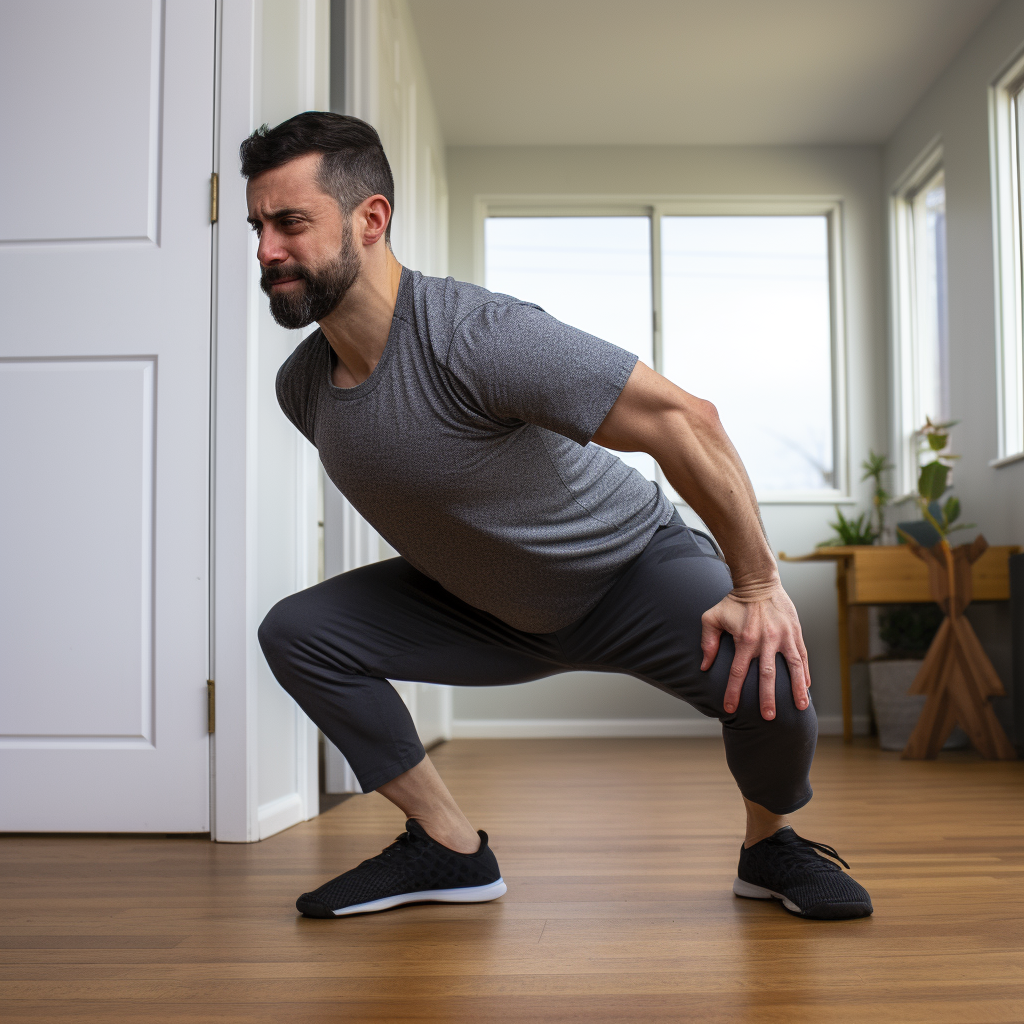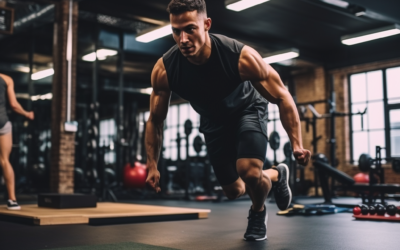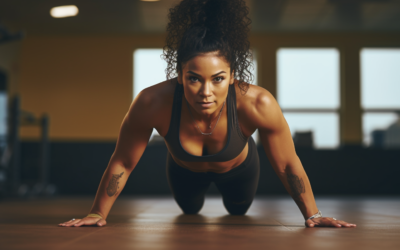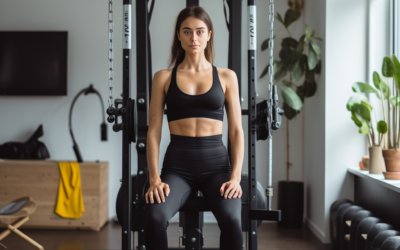Today, we’re diving into the realm of mobility—a vital yet often overlooked component of our overall fitness regimen. Whether you’re an athlete striving for peak performance, a dedicated gym-goer aiming for functional strength, or someone simply seeking to enhance your daily movements, this comprehensive guide will equip you with the knowledge and exercises to unlock your body’s true potential.
Why Train Mobility?
While strength and cardiovascular endurance are important, neglecting mobility limits our body’s range of motion and can lead to movement restrictions, imbalances, and compromised functionality. Let’s explore it’s essential to train mobility:
Improving mobility allows us to move with greater ease and efficiency. By increasing the range of motion in our joints, we can perform exercises and daily activities with improved form, technique, and coordination. Enhanced movement quality means smoother transitions, better body control, and the ability to generate power effectively.
Mobility training is also key for preventing injuries. When certain muscles are tight and others are weak, imbalances occur, placing excessive stress on our joints and connective tissues. Over time, this can lead to discomfort, strains, sprains, and even chronic conditions like tendinitis.
In our modern sedentary lifestyle, maintaining good posture and alignment has become increasingly challenging. Mobility training helps counteract the negative effects of prolonged sitting, repetitive movements, and poor posture. By addressing muscular imbalances, releasing tightness, and improving spinal alignment, we can reduce postural deviations, alleviate chronic pain, and enhance overall body mechanics. Proper alignment not only promotes better physical appearance but also optimizes movement efficiency and reduces the risk of chronic musculoskeletal issues.
Mobility Workout: An Overview
A mobility workout targets specific joints, muscle groups, and movement patterns, improving flexibility, joint stability, and movement mechanics. Let’s explore the key components of effective mobility workouts:
Warm-Up: Begin with a few minutes of light cardio activity to increase blood flow and dynamic stretches to activate muscles and joints.
Joint Mobilization: Perform controlled movements to warm up joints, increase synovial fluid production, and prepare for exercises.
Targeted Mobility Exercises: Focus on specific areas with exercises tailored to your needs. Choose movements that improve flexibility and joint stability.
Cool-Down and Stretching: Gradually lower your heart rate with low-intensity cardio, then perform static stretches to relax and lengthen muscles.
Frequency and Progression: Aim for two to three mobility workouts per week. Progress by increasing duration, incorporating challenging exercises, and exploring new movement patterns.
By consistently prioritizing mobility training, you’ll enhance overall fitness, improve performance, and reduce the risk of injuries. Stay tuned as we delve into specific shoulder and hip mobility exercises, along with a comprehensive full body mobility routine. Get ready to unleash the true capabilities of your body!
Shoulder Mobility Exercises
Improving shoulder mobility enhances overhead movements, posture, and overall upper body function. Below are some effective shoulder mobility exercises:
Shoulder Circles: Stand with feet shoulder-width apart. Extend your arms out to the sides and begin making slow circles with your shoulders, gradually increasing the size of the circles. Perform both forward and backward rotations to mobilize the shoulder joints.
Thread the Needle: Start on all fours with your hands directly under your shoulders. Reach one arm under your body, threading it between your other arm and the ground. Maintain stability in your core and spine as you rotate your torso. Repeat on both sides to enhance rotational mobility in the shoulders.
Wall Angels: Stand with your back against a wall, feet about 6 inches away from the wall. Raise your arms and bend your elbows to create 90-degree angles. Slowly slide your arms up the wall while maintaining contact with your back and elbows. Return to the starting position and repeat to improve shoulder flexion and mobility.
Band Pull-Aparts: Hold a resistance band with your arms extended in front of you, hands shoulder-width apart. Keeping your arms straight, pull the band apart by squeezing your shoulder blades together. Slowly return to the starting position. This exercise strengthens the muscles responsible for shoulder retraction, improving posture and mobility.
Shoulder Dislocations: Hold a resistance band with a wide grip in front of you. Raise the band overhead and behind your body, maintaining tension as you bring it back to the front. This exercise improves shoulder mobility in various directions and can be adjusted based on your flexibility by using a wider or narrower grip on the band.
Hip Mobility Exercises
The hips are vital for generating power, stability, and fluid movement patterns. Improving hip mobility enhances athletic performance, functional movements, and overall lower body strength. Let’s dive into some effective hip mobility exercises:
Deep Squats: Stand with your feet shoulder-width apart. Slowly lower into a deep squat, keeping your heels on the ground and your chest lifted. Use your elbows to gently push your knees out, promoting hip mobility and flexibility. Hold the position for a few seconds and then rise back up. Repeat to improve hip flexion, extension, and overall lower body mobility.
Hip Circles: Stand tall with your hands on your hips. Begin by rotating your hips in a circular motion, both clockwise and counterclockwise. Focus on making smooth and controlled circles, allowing your hips to move through their full range of motion. This exercise helps increase hip mobility in all directions.
Glute Bridges: Lie on your back with your knees bent and feet flat on the ground, hip-width apart. Engage your glutes and lift your hips off the ground, creating a straight line from your knees to your shoulders. Hold for a few seconds and then lower your hips back down. Repeat to strengthen the glutes, activate the hip extensors, and improve hip mobility and stability.
Pigeon Pose: Begin in a push-up position. Bring one knee forward and place it behind your hand on the same side, with your foot near the opposite hip. Extend your opposite leg straight back behind you. Lower your torso onto your front leg, feeling a deep stretch in your hip. Hold for a few seconds and then switch sides. Pigeon pose enhances hip external rotation and opens up the hip flexors.
Lateral Band Walks: Place a resistance band around your legs, just above your knees. Assume a slight squat position with your feet shoulder-width apart. Take small steps sideways while maintaining tension on the band. Move in one direction for several steps, then return in the opposite direction. Lateral band walks target the hip abductors and improve hip stability and mobility.
Spiderman Lunge: Begin in a push-up position. Step one foot forward and place it outside your hand on the same side. Drop your back knee toward the ground, feeling a stretch in your hip flexors. Push back to the starting position and repeat on the other side. Spiderman lunges improve hip flexion and mobility while stretching the hip flexor muscles.
Full Body Mobility Routine
This routine combines the benefits of shoulder and hip mobility exercises, integrating them with additional exercises to provide a well-rounded approach to enhancing your body’s mobility and functionality. Let’s dive into a sample full body mobility routine:
Cat-Cow Stretch: Begin on all fours with your hands directly under your shoulders and your knees under your hips. Inhale as you arch your back and lift your chest towards the ceiling (Cow Pose). Exhale as you round your spine, tuck your chin to your chest, and draw your belly button towards your spine (Cat Pose). Repeat the fluid movement between the two poses for several repetitions to promote spinal mobility and warm up the body.
Downward Facing Dog: From the cat-cow position, lift your knees off the ground, extending your legs and pushing your hips up and back. Press your palms firmly into the ground and engage your core. Allow your head to relax between your arms, and focus on lengthening your spine and stretching your hamstrings. Hold this position for a few breaths to improve shoulder and hamstring mobility.
Shoulder Circles: (see above).
Hip Circles: (see above).
Squats: Stand with your feet shoulder-width apart. Lower your body into a deep squat position, keeping your heels on the ground and your chest lifted. Engage your core, push your knees out, and focus on maintaining good form. Rise back up and repeat for several repetitions to improve hip and ankle mobility while engaging the lower body muscles.
Standing Forward Fold: Stand with your feet hip-width apart. Hinge at the hips and fold forward, reaching your hands towards the ground or holding onto your shins. Allow your head and neck to relax. Feel the stretch in your hamstrings and lower back. Hold this position for a few breaths to enhance hamstring and spine mobility.
Incorporate this full body mobility routine into your weekly training schedule, aiming for two to three sessions per week. Consistency is key, so make it a regular part of your fitness routine to reap the benefits of enhanced mobility, improved movement quality, and reduced risk of injuries.
Final Thoughts: Mobility…
Prioritizing mobility in your fitness routine is essential for improving movement quality, preventing injuries, and enhancing overall performance. By incorporating effective warm-ups, targeted exercises for shoulders and hips, and a comprehensive full body mobility routine, you can unlock greater range of motion, functional movement, and vitality. Consistency and progression are key, so make mobility training a regular part of your routine, listen to your body, and embrace the transformative power of enhanced mobility. Get ready to unleash your body’s true potential and experience the benefits of moving with grace.
To learn more, visit Train Fitness.
More Articles
Transformative Discipline: Exploring the Principles of 75 Hard
Recently, my friends and I were thinking of ways to start the new year positively, and 75 Hard will put us to the test in an effective way. Setting off on a path toward resilience and self-improvement frequently calls for more than just internal drive; it also calls...
The Best Full Body HIIT Workout You Can Do
Workouts involving full-body high-intensity interval training (HIIT) are a quick and easy approach to optimize your fitness progress. These workouts usually consist of a series of heart-pumping, intensive movements that target numerous muscle groups at once,...
Ab Workouts: Creating a Home Gym that Fits Your Lifestyle
Ab workouts are an important part of any fitness regimen because they target the core muscles that are crucial for stability, posture, and general strength. You can choose from a wide range of workouts to achieve a stronger core or a toned stomach. Engaging the...
Home Sweet Home Gym: Your Gateway to a Healthier Lifestyle
Picture this: no more rushing to the gym during peak hours, no waiting for your favorite machine, and no distractions from strangers. Instead, imagine a space where you can focus entirely on your fitness goals, set your workout schedule, and curate an environment that...
Mastering Back Exercises with Dumbbells
Dumbbell back workouts are a flexible and efficient way to improve your general strength, posture, and muscle growth. Dumbbells are a great addition to any exercise regimen, whether you're a back-health fanatic, an athlete, or just someone who enjoys working out....
The Fierce Flats
With our "Fierce Flat’s" blog, you'll be able to dive into the realm of lifting like never before. Forget about flashy kicks and high-tech soles; there's a new look in town. This blog will break down Converse and Vans' game-changing styles for all of your lifting...





